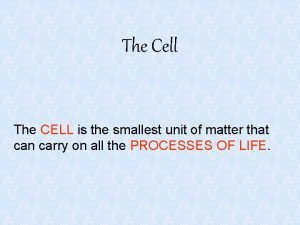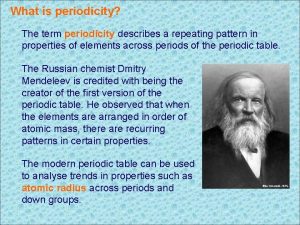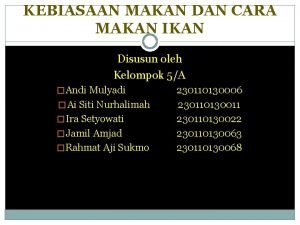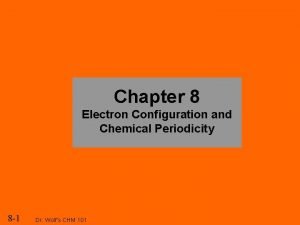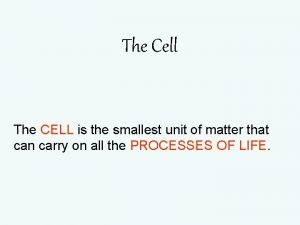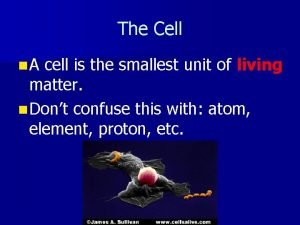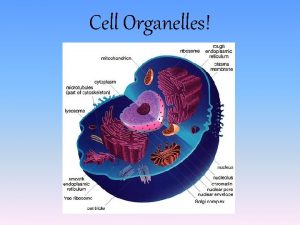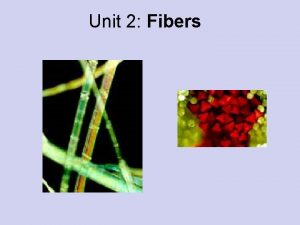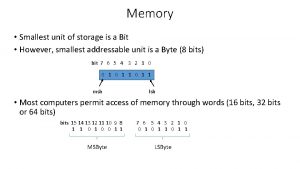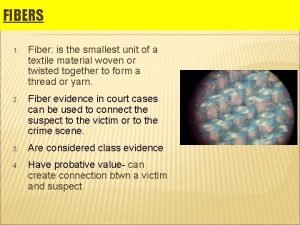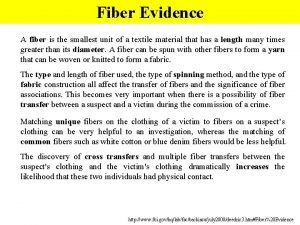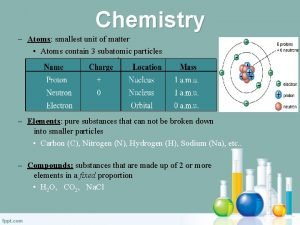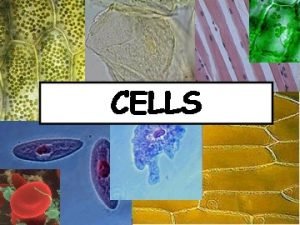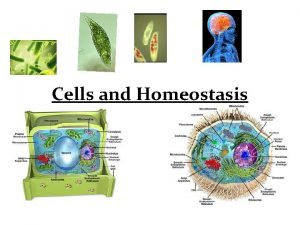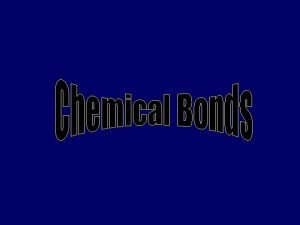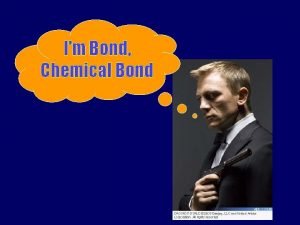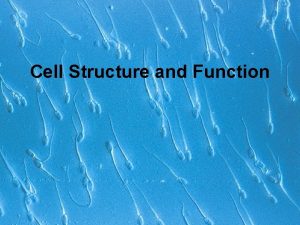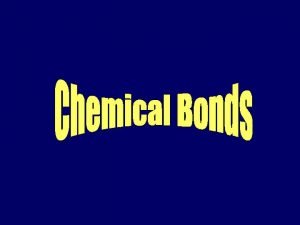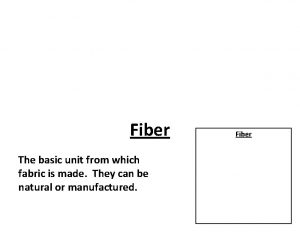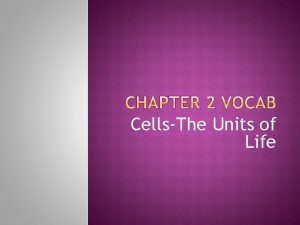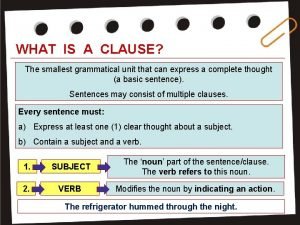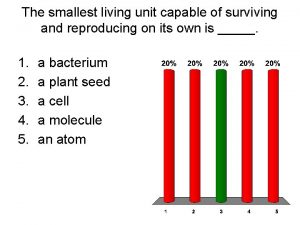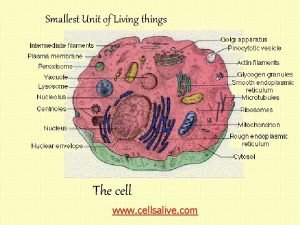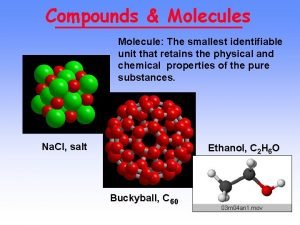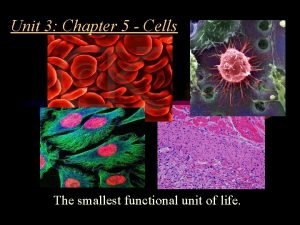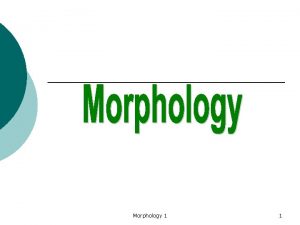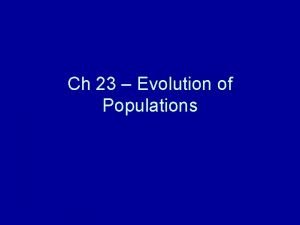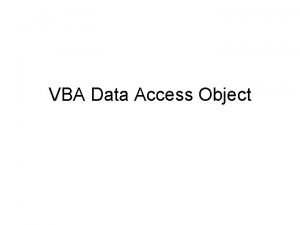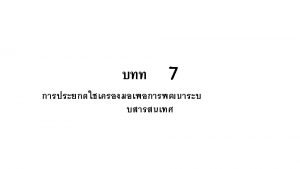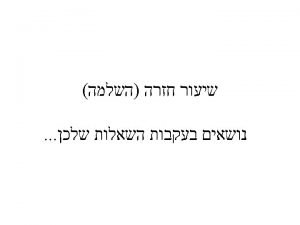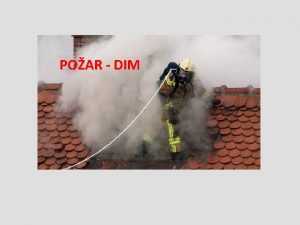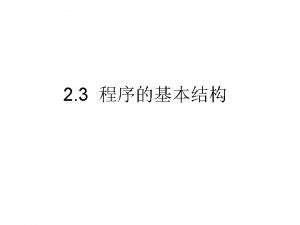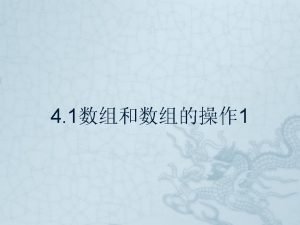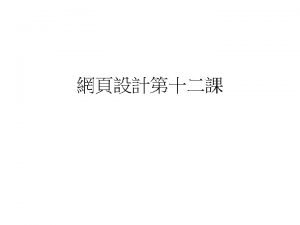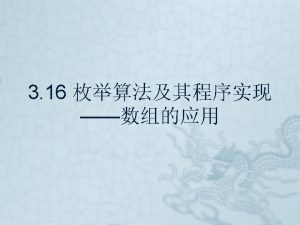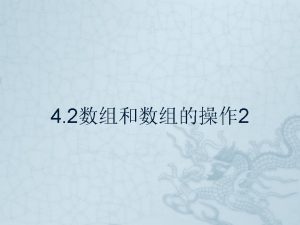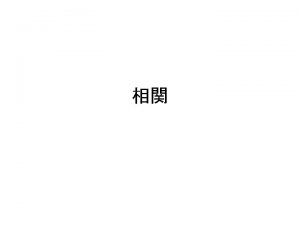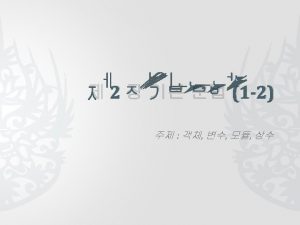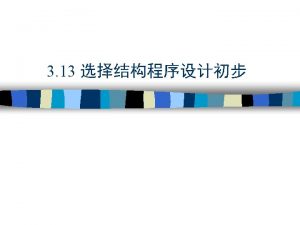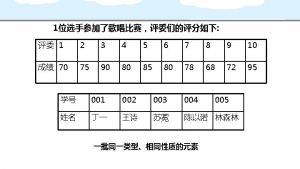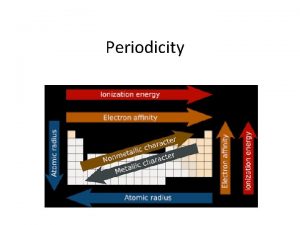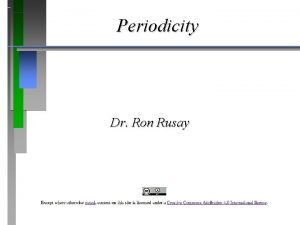Periodicity in 3 dim smallest repeated unit cell





































![P C PT R ( Trigonal Rhombohedral Cell ) [ det ] 2 [ P C PT R ( Trigonal Rhombohedral Cell ) [ det ] 2 [](https://slidetodoc.com/presentation_image/4aea82de4bd1964c930d3e48c82db86d/image-38.jpg)














- Slides: 52

Periodicity in 3 -dim. – smallest repeated unit cell Symmetry in two-dimension 2 D unit cell

Symmetry in two-dimension




Symmetry elements

Periodicity in 3 -dimetions ---Smallest repeated Unit --- Unit cell Symmetry elements, symbols, matrix representation: Basic symmetry elements ☆ proper rotation Cn → n; symbol in ‘point group → space group’ e. g. 4 z matrix representation To suit inside a repeated unit in the space 1, 2, 3, 4, 5, 6 fold

☆ mirror planes v, h, d --- m (a, b, c, d, n) ☆ center of symmetry ☆ improper rot. s→ ☆ translation along edges of the cell by fractions of the edge length

☆ translation along edges of the cell by fractions of the edge length ☆ screw axis rot. + tr. ☆ glide planes m + tr along a, b, c, diagonal, a, b, c, n, d + tr along c

Derived Symmetry within the lattice Unit cell or crystal lattice formed by 3 -non-planar vectors Limitation of symmetry by periodicity n t t

Lattice Centering --- Pure translational rot: + translation

Lattice Centering – pure translational 1 2 3 4 P I, A, B, C R 4 F A F P I B C R

Unit cell classifications Lattice centering Crystal system Min. sym. P Triclinic 1 a b c , 90 P, I Monoclinic 2 a b c , 90 P, I, F, B Orthorhombic 222 a b c , 90 P, I Tetragonal 4 a b c , 90 P Hexagonal 6 a b c , 90 , 120 P Trigonal 3 a b c , 90 , 120 , V R Rhombohedral 3 P, I, F Cubic 23 Max. sym. 3 m Cell parameters a’ b’ c’ , ’ ’ ’ 90 , V’ = 1/3 V a b c , 90

Other of Positions in the Symbols of the Three-dimensional Point Groups as applied to Lattices System and Point Group Poles of directions Position in Point-group Symbol Primary Secondary Tertiary Triclinic Only one symbol which denotes all directions in the crystal. Monoclinic Orthorhombic Tetragonal Trigonal and hexagonal Cubic The symbol gives the nature of the unique diad axis (rotation and/or inversion). 1 st setting: z-axis unique (001) 2 nd setting: y-axis unique (010) Diad (rotation and/or inversion) along xaxis (100) Diad (rotation and/or inversion) along yaxis (010) Diad (rotation and/or inversion) along z-axis (001) Tetrad (rotation and/or inversion) along z-axis (001) Diads (rotation and/or inversion) along x- and y-axes (100) or (010) Diads (rotation and/or inversion) along [110] and [1 0] axes (110) (1 0) Triad or hexad (rotation and/or inversion) along xaxis (001) Diads (rotation and/or inversion) along x-, y- and uaxes (100) ____ Diads (rotation and/or inversion) normal to x-, y -, u-axes in the plane(001); (100) …… Diads or tetrads (rotation and/or inversion) along (100) axes (100) Triads (rotation and/or inversion) along (111) axes (111) Diads (rotation and/or inversion) along (110) axes (110) Stereographic for primary position ditto representation Secondary Tertiary ditto z y x Triclinic z y x x Monoclinicnd 1 st setting 2 setting x Orthorhombic z y x Tetragonal u z y x Trigonal and hexagonal z x Cubic y

Symmetry Operations and Space Groups The 14 Bravais lattices a b a c b a c b b c a c c b a a c b

續上頁 c 1 c a a 1 b b 1 or P 3 m 1 c c b b a 120 c c b b a a c a

Laue symmetry unique part of sphere Triclinic Monoclinic Orthorhombic 1/2 2/m 1/4 (m m m) 1/8 Tetragonal 1/8 1/16 Hexagonal 1/12 1/24 Trigonal 1/12 1/6 Cubic 1/24 1/48

Space Group Definition 1. a i aj = ak where ak must be an element in the group 2. must have an identity element, I, so that ai I = ai 3. The inverse of every element must also be an element in the group 4. associative law (a i aj ) ak = ai (a j ak)

1, 2, 3, 4, 6 inverse rot. 5 (Sn) rot. 5 Cn : 32 Point Gourps m 3 Cnh: rot. + m 1 Cnv rot. + m 3 m 6 Dn 3 rot. 222 , 32(2) , 422 , 622 , 23 , 432

mm 2 Dnh 4 mm 6 mm rot. +m + m 9 3


m

(7) (32) (230)

( 7) Crystal system (32) point group (230) space groups



Space group P 21/c basic sym elements origin shift rot. tr.

after origin shift to (0 0 0) after origin shift of (0, ¼, ¼)

P 21/c 2/m P 121/c 1 UNIQUE AXIS b, CELL CHOICE 1 Monoclinic Patterson symmetry P 12/m 1

P 21/c

Space group Pnc 2 Fig Completed worksheet

basic sym = derived sym n

P 6 mm Hexagonal Patterson symmetry P 6 mm

P 6 mm



![P C PT R Trigonal Rhombohedral Cell det 2 P C PT R ( Trigonal Rhombohedral Cell ) [ det ] 2 [](https://slidetodoc.com/presentation_image/4aea82de4bd1964c930d3e48c82db86d/image-38.jpg)
P C PT R ( Trigonal Rhombohedral Cell ) [ det ] 2 [ det ] 3 R (0, 0, 0) ; (2/3, 1/3) ; (1/3, 2/3) F I [ det ] 3 [ det ] 2 R (0, 0, 0) ; (1/3, 2/3, 1/3) ; (2/3, 1/3, 2/3)


P 21/c UNIQUE AXIS b, DIFFERENT CELL CHOICE 1 P 121/c 1 UNIQUE AXIS b, CELL CHOICE 1 2/m Monoclinic

P 121/n 1 UNIQUE AXIS b, CELL CHOICE 2

P 121/a 1 UNIQUE AXIS b, CELL CHOICE 3


direct space Inverse transpose reciprocal space Inverse transpose

Cell Transformation Cell 1 (a, b, c) (h. k. l) Cell 2 (x, y, z) ; (a*, b*, c*) ; (u, v, w) u x, v y, w z where u, v, w integer

Transformation between c 1 a 2 a, b, c c 2 reverse h, k, l transpose a*, b*, c* x, y, z u, v, w reverse

I P Trigonal T F P F S rhombohedral cell trigonal cell obverse (positive) reverse (negative) I

Trigonal lattices As for the hexagonal cell, in the conventional trigonal cell the threefold axis is chosen parallel to c, with a b, unrestricted c, 90 , and 120. Centred cells are easily amenable to the conventional P trigonal cell. Because of the presence of a treefold axis some lattices can exist which may be described via a P cell of rhombohedral shape, with unit vectors a. R, b. R, c. R such that a. R b. R c. R, R R R, and the three fold axis along the a. R b. R c. R direction. Such lattices may also be described by three hexagonal cells with basis vectors ahex, bhex, chex defined according to ahex a. R b. R ahex b. R c. R ahex c. R a. R bhex b. R c. R or bhex c. R a. R or bhex a. R b. R chex a. R b. R c. R These hexagonal cells are said to be in obverse setting. Three further triple hexagonal cells, said to be in reverse setting, can be obtained by changing ahex and bhex to ahex and bhex. The hexagonal cells in obverse setting have centring point at (0, 0, 0), (2/3, 1/3), (1/3, 2/3) While for reverse setting centring points are at (0, 0, 0), (1/3, 2/3, 1/3), (2/3, 1/3, 2/3) It is worth nothing that a rhombohedral description of a hexagonal P lattice is always possible. Six triple rhombohedral cells with basis vectors a’R, b’R

Trigonal T Rhombohedral Cell Obverse (positive) Trigonal Cell Reverse (negative)



In direct space: ☆ x, y, z fractional coordinates In reciprocal space: ☆ h, k, l plane, miller indices
 Cells are the smallest unit of life
Cells are the smallest unit of life What is periodicity?
What is periodicity? First dental home visit documentation form
First dental home visit documentation form Cara memakan ikan
Cara memakan ikan Chemsheets periodicity
Chemsheets periodicity 1s 22 s22 p63 s23 p64 s2
1s 22 s22 p63 s23 p64 s2 Electronic configuration of mo (z=42)
Electronic configuration of mo (z=42) Ap chemistry atomic structure and periodicity
Ap chemistry atomic structure and periodicity Bright futures screening guidelines
Bright futures screening guidelines Oxygen periodic trends
Oxygen periodic trends Periodic table trends
Periodic table trends Wuchereria
Wuchereria Chapter 7 atomic structure and periodicity
Chapter 7 atomic structure and periodicity Smallest cell organelle
Smallest cell organelle Smallest cells
Smallest cells Smallest part of the plant
Smallest part of the plant What is the smallest organelle in a cell
What is the smallest organelle in a cell The smallest unit of a textile is called a fiber
The smallest unit of a textile is called a fiber Principle of faunal succession
Principle of faunal succession Smallest unit of computer memory
Smallest unit of computer memory The smallest unit of textile material is called
The smallest unit of textile material is called Smallest unit of fabric
Smallest unit of fabric Are atoms the smallest unit of matter
Are atoms the smallest unit of matter Cells are the smallest unit of life
Cells are the smallest unit of life What is the smallest living unit in an organism?
What is the smallest living unit in an organism? Cells are the smallest unit of life
Cells are the smallest unit of life The smallest living unit is a
The smallest living unit is a What is the smallest unit of matter
What is the smallest unit of matter What is the smallest addressable unit of memory
What is the smallest addressable unit of memory Smallest unit of metallic bond
Smallest unit of metallic bond The smallest unit of a textile is called a fiber.
The smallest unit of a textile is called a fiber. What is the smallest living unit in the body
What is the smallest living unit in the body What is the smallest living unit
What is the smallest living unit Whats the smallest unit of matter
Whats the smallest unit of matter What is the basic unit from which a fabric is made
What is the basic unit from which a fabric is made The smallest distinctive sound unit of language is a
The smallest distinctive sound unit of language is a What unit of size are the smallest organisms found on earth
What unit of size are the smallest organisms found on earth A clause is the smallest unit.
A clause is the smallest unit. Smallest living unit
Smallest living unit What is the smallest unit of a living organism
What is the smallest unit of a living organism What is the smallest unit of living organisms
What is the smallest unit of living organisms The smallest unit of election administration
The smallest unit of election administration What is the smallest identifiable unit of a compound
What is the smallest identifiable unit of a compound Smallest living unit
Smallest living unit Smallest functional unit of life *
Smallest functional unit of life * Headless compound
Headless compound In a language the smallest distinctive sound unit
In a language the smallest distinctive sound unit Why are populations the smallest unit of evolution
Why are populations the smallest unit of evolution The smallest unit of charge is
The smallest unit of charge is What is the smallest unit of a metallic bond
What is the smallest unit of a metallic bond Unit 6 review questions
Unit 6 review questions Data access object
Data access object Dim adjective
Dim adjective
